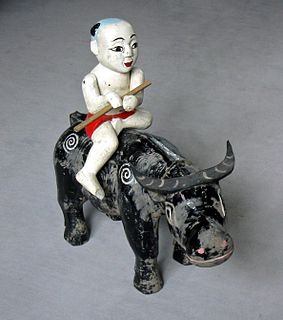 W
WAme ni mo makezu is a famous poem written by Kenji Miyazawa, a poet from the northern prefecture of Iwate in Japan who lived from 1896 to 1933. The poem was found posthumously in a small black notebook in one of the poet's trunks.
 W
WBuddhacharita is an epic poem in the Sanskrit mahakavya style on the life of Gautama Buddha by Aśvaghoṣa, composed in the early second century CE. Of the poem's 28 cantos, the first 14 are extant in Sanskrit complete.
 W
WThe Dhammapada is a collection of sayings of the Buddha in verse form and one of the most widely read and best known Buddhist scriptures. The original version of the Dhammapada is in the Khuddaka Nikaya, a division of the Pali Canon of Theravada Buddhism.
 W
WThe Mahavamsa is the meticulously kept historical chronicle of Sri Lanka written in the style of an epic poem written in the Pali language. It relates the history of Sri Lanka from its legendary beginnings up to the reign of Mahasena of Anuradhapura covering the period between the arrival of Prince Vijaya from India in 543 BCE to his reign and later updated by different writers. It was composed by a Buddhist monk at the Mahavihara temple in Anuradhapura about the fifth century A.D. In 2021, a petition was made to declare the original leaf book a UNESCO heritage.
 W
WSang Sinxay, is a Lao epic poem written by Pang Kham. It tells the story of the hero Sinxay (ສິນໄຊ) who goes on a quest to rescue his aunt Soumountha (ສູມຸນທາ) who was abducted by the demon Nyak Koumphan (ຍັກກູມພັນ). The poem is believed to have been written sometime between the mid-16th and the end of the 17th century in the Lao kingdom of Lan Xang. Sang Sinxay is considered one of the three masterpieces of Lao literature. The poem is popular in Laos and in the Isan region of Thailand, where its scenes are also depicted on numerous temples.
 W
WThe Senzai Wakashū , often abbreviated as Senzaishū, is an imperial anthology of Japanese waka poetry. It was compiled in 1187 by Fujiwara no Shunzei at the behest of the Retired Emperor Go-Shirakawa, who ordered it in 1183. It consists of twenty volumes containing 1,285 poems.
 W
WThe Shūi Wakashū , often abbreviated as Shūishū, is the third imperial anthology of waka from Heian period Japan. It was compiled by Emperor Kazan in about 1005. Its twenty volumes contain 1,351 poems. The details of its publication and compilation are unclear.
 W
WSugata Saurabha is an epic poem in Nepal Bhasa by Chittadhar Hridaya, one of the greatest literary figures from Nepal in the 20th century. Sugata Saurabha, meaning “The Fragrant Life of the Buddha”, is based on the life story of Gautama Buddha.
 W
WTen Bulls or Ten Ox Herding Pictures is a series of short poems and accompanying drawings used in the Zen tradition to describe the stages of a practitioner's progress toward enlightenment, and their return to society to enact wisdom and compassion.